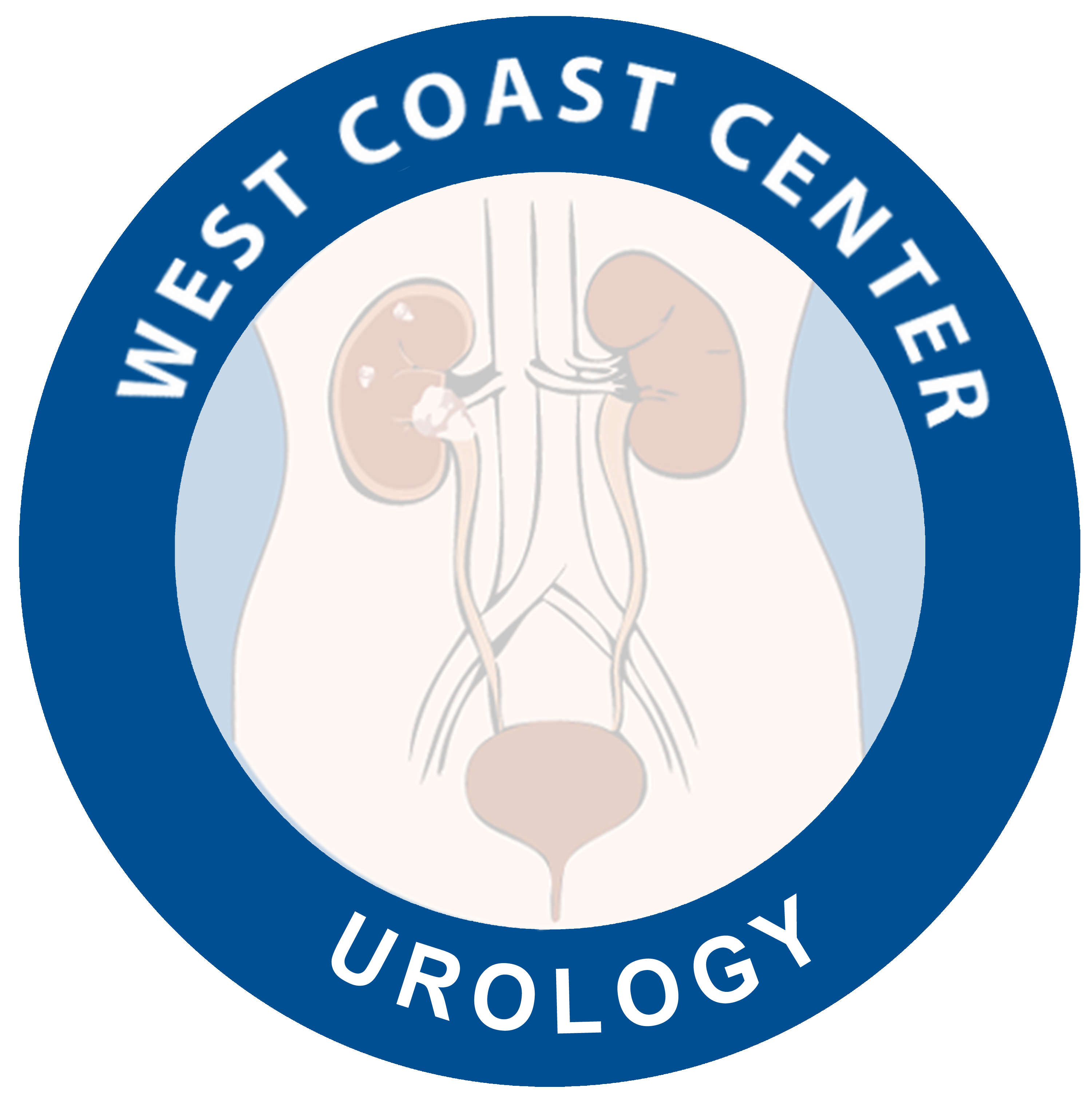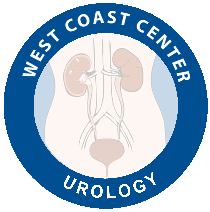Urinary Incontinence and voiding dysfunction
- Urinary Incontinence and voiding dysfunction
- Men: Stress Urinary Incontinence
- Men: Pelvic Floor Rehabilitation
- Men: Transurethral Injection of Bulking Agents
- Men: Male Slings
- Men: Artificial Urinary Sphincter (AUS)
- Men: Adjustable continence device (Pro-ACT ) (Investigational)
- Women: Stress Urinary Incontinence
- Women: Pelvic Floor Rehabilitation
- Women: Transurethral Injection of Bulking Agents
- Women: Minimally Invasive Slings
- Women: Adjustable Continence Device
- Urge Incontinence in men and women
- Behavior Modification, Pelvic floor Rehabilitation and Biofeedback
- Botox Injection
- Sacral Neuromodulation
- Percutenous Tibial Nerve Simulation (PTNS)
Urinary Incontinence and voiding dysfunction
Good control of the urine requires coordination between the urinary bladder and the sphincter, which is the urinary shut-off valve. The urinary bladder has two functions: storage and elimination of urine. In the storage phase, the bladder muscle relaxes and allows storage of urine at very low pressure. This unique character of the bladder is known as compliance or elasticity. Compliance means that the muscle bundles within the bladder slide one over the other to allow the bladder to expand in volume without increasing pressure. The urinary sphincter is made-up of a group of muscles that contracts at the time of storage to avoid any leakage of urine and relaxes when bladder contraction occurs. This relaxation of the urinary sphincter allows the urine to flow freely out. The coordination of these muscle groups allows humans to store and eliminate urine under conscious control.
Urinary incontinence occurs when there is either a defect in the sphincter muscle (its nerve supply, or its supporting tissues) or in the function of the bladder. Defect in the sphincteric muscle, a condition known as Intrinsic sphincteric deficiency (ISD) or stress urinary incontinence
Defect in the bladder function can result in poor storage of urine, inappropriate reflex activity of the bladder, a condition known as bladder over activity or urge incontinence. Bladder can also loose its unique character (elasticity) or compliance from a variety causes as aging, Obstruction, scarring from pelvic surgery, This will prevent the bladder from properly expanding and storing he urine resulting in incontinence.
The first step in proper management of urinary incontinence starts with proper diagnosis of the cause of the incontinence. This can be achieved by simple office procedure called Video-Urodynamic.
The most common types of incontinence are:
1-Stress Incontinence or Incontinence related to physical activity
Stress Incontinence in men
Stress Incontinence in women
2- Urge Incontinence or incontinence related to inability to make it to the bathroom on time
3-Mixed Incontinence with both stress and urge.
There are some other less common forms of incontinence:
– Incontinence due to chronic urinary obstruction (overflow incontinence)
- Incontinence associated with abnormal communication or fistulous tract
Stress Incontinence in men
Stress Urinary incontinence occurs in men, when there is a defect in the sphincteric muscle (its nerve supply, or its supporting tissues). Defect in the sphincteric muscle, a condition known as Intrinsic sphincteric deficiency (ISD) can result from extensive pelvic surgery as prostate and colon surgery, pelvic radiation, pelvic trauma or neurologic problems as spinal cord injury, multiple sclerosis or Parkinsonism.
The first step in proper management of urinary incontinence in men starts with proper diagnosis of the cause of the incontinence. This can be achieved by simple office procedure called Video-Urodynamic.
Dikranian, A H; Chien, Gary; Mikhail, A; Kaswick, J; Aboseif, S: Preoperative predictors of urinary incontinence after radical prostatectomy. J Urol. 169: 403, 2003.
Options for Male Stress Incontinence
- Pelvic floor rehabilitation program
- Transurethral Injection of bulking agents
- Male slings
- Artificial Urinary Sphincter (AUS): AMS800
- Adjustable continence device (Pro-ACT )(Investigation)
Stress Incontinence in Women
This is the loss of urine associated with laughing, sneezing, coughing, physical or sexual activities.
Stress urinary incontinence in women is most frequently due to weakness in pelvic floor with poorly supported bladder and urethral sphincter. This results in the inefficient function of both the bladder and the sphincter muscle. Weakness of the pelvic floor and poor support of the bladder and the urethra can result from multiple factors including multiple pregnancies and deliveries which result in stretching of the vaginal wall and the surrounding pelvic muscles, aging, menopause with hormonal changes and deficiency of estrogen. Additional factors include congenital weakness, smoking, chronic cough and obesity
The vaginal is located in the central portion of the pelvic floor. Weakness of the pelvic floor, create an out-pouching of the vagina. This results in displacement and herniation of the bladder and the urethra, anteriorly, a condition known as Cystocele as well as herniation of the rectum posteriorly, a condition known as Rectocele. Excessive displacement and out-pouching of the bladder and the urethra can cause the loss of urine with any physical activities. It can also cause a large bulge in the vagina, which can make emptying of the bladder very difficult, cause pain specially during walking and interfere with sexual activities. In extreme cases, it might affect the kidneys due to kinking and obstruction of the ureters; the tubes that transport urine from the kidney to the bladder
Evaluation:
Video-Urodynamic is an in-depth evaluation of the function of the lower urinary tract and the pelvic floor muscles. It allows simultaneous Urodynamic assessment of the bladder and the sphincteric function with X-ray imaging of the lower urinary tract, electromyography to assess the strength and the function of the pelvic floor. We always recommend it prior to any surgical intervention
Treatment Options:
- Pelvic floor rehabilitation
- Bulking agents
- Minimally invasive slings
- Adjustable continence device (Investigational)
Urge Incontinence: Overactive Bladder (OAB) in Men and Women
This is the sudden loss of urine for no apparent reason, frequently preceded by a very strong urge to urinate and inability to make it to the bathroom on time. This is usually due to inappropriate and uncontrollable bladder contraction. This condition is commonly referred to as overactive bladder (OAB).OAB frequently results with aging, as bladder muscles weaken, and sometimes as a result of bladder infection, inflammation, stones, cancer or obstruction of the bladder or urethra from previous pelvic surgery, scar tissues, enlarged prostate in men.Some medical conditions, such as hyperthyroidism and uncontrolled diabetes, can also lead to or worsen urge. OAB can also result from problems with the nervous system as Multiple sclerosis, Parkinson’s disease, Alzheimer’s disease, stroke, and spinal cord injury, extensive pelvic surgery or radiation. This condition is commonly referred to hyper reflexive bladderPatient frequently experiences sudden loss of urine after drinking a small amount of water, or by touching water or hearing it running (as when washing dishes or hearing someone else taking a shower) walking by a lake or swimming pool or during sleep. Certain fluids and medications such as caffeine, alcohol, diuretics or emotional states such as anxiety and cold weather can worsen this condition.
To make a diagnosis of OAB, you will be asked to make a voiding diary for 2 non-consecutive days, including the type and the amount of fluids you consume in 24 hours and how often you urinate in 24 hours. You will be provided the forms and a special container to record the volumes. In addition, you will have a VideoUordynamic evaluation of your bladder, sphincter and the pelvic floor.
Options for Urge Incontinence and Voiding Dysfunction
Behavior modification and biofeedback
Percutenous Tibial nerve stimulation = Urgent PC
Behavior modification and Biofeedback
This includes:
1-Diet modification: Avoid caffeine and caffeine containing beverages, e.g. coffee, tea soda, chocolate, alcohol, excessive juices as cranberry juice citrus juices, spicy food, acidic food
2-Cut down on fluid intake to 3-4 glasses/day
3-No fluids, fruits or vegetables at least 3 hours before you go to bed
4-Use chewing gums or sour candy to moisten the mouth
5-Timed voiding: Go to the bathroom every 2 hours during the daytime, even you don’t have an urge to go.
6-Correct constipation
7-Pelvic floor rehabilitation known as kegal exercises:
8-Bladder Drill: patient is instructed no to void on every slight urge. Gradually increase interval between urination by 15 min every 1 week until reach 2-2.5 hours
Percutenous Tibial nerve stimulation = Urgent PC
Posterior tibial nerve stimulation (PTNS) or Urgent PC is a technique of electrical neuromodulation for the treatment of voiding dysfunction in patients who have failed behavioral and/or pharmacologic therapies.
Procedure:
Patient sits comfortably on a chair.
The tibial nerve is accessed using a fine-needle electrode inserted slightly above the ankle, and low-voltage electrical stimulation is delivered. The course of treatment is typically 10–12 weeks of 30-minute weekly sessions. The posterior tibial nerve is located near the ankle; it is derived from the lumbar-sacral nerves (L4-S3), which control the bladder detrusor and perineal floor. Altering the function of the posterior tibial nerve with posterior tibial nerve stimulation is believed to improve voiding function and control.
The most common side-effects with Urgent PC treatment are temporary and minor, resulting mainly from the placement of the needle electrode. They include minor bleeding, mild pain and skin inflammation
Dr. Marshall Stoller developed this technology at UCSF where Dr Aboseif did his Urology training
Botox injection:
The procedure is commonly performed in the office or surgi-center under local anesthetic.
A special scope is used to inject Botox into the muscle of the bladder. The procedure usually takes about 20-30 minutes. You might experience some burning when you urinate the first few times. You may also see some blood in the urine. Significant bleeding is rare. You should start seeing the effect of Botox in as little as two weeks. Botox usually lasts for 6-9 months

